Hanwell is a town in the London borough of Ealing. It lies on the River Brent which forms its boundary with Southall to the west. The earliest known reference is as Hanwelle in CE 959. Apparently the name Hanwell possibly derives from a stream or spring where there are cocks - the chicken sort that is. There is enough of interest in and around Hanwell for a January afternoon’s walkabout.
Hanwell Station
The Great Western Railway came to Hanwell in 1838 and built a station on the north side of the town. Now run by Transport for London as part of the Elizabeth Line trains run between Heathrow Airport and Abbey Wood, meaning that coming in from the west I had to change at Hayes & Harington. The station has been modernised to provide step free access but also much restored into its GWR station colour scheme which looks great.
There are even some restored signs on the platform showing ‘Hanwell & Elthorne’, the name by which the station was known between 1896 and 1974.
The Wharncliffe Viaduct
For the GWR to get west from Hanwell to Southhall it needed to cross the valley of the River Brent. To achieve this Isambard Kingdom Brunel designed his first major engineering construction project, the Wharncliff Viaduct. Built in brick with hollow piers it rises 66 feet (20m) above the valley and is 890 ft (270m) long with 8 arches. It was built in 1836-1837 ready for the opening of the GWR main line.
On the central pier on the south side is a carving of the coat of arms of James Stuart Wortley Mackenzie, Lord Wharncliffe, who was chairman of the parliamentary committee that steered the passage of the GWR Bill through Parliament. If you have money and influence you’re allowed to tag railway bridges.
Hanwell Flight of Locks
Lying just across the boundary in Southhall but named after Hanwell because it’s much closer are the six locks on the Grand Union Canal. These raise the canal about 53 feet (16m). The flight has a clever system of side ponds to conserve water by holding water let out of a lock to refill the one below. The flight runs alongside the former Middlesex County Lunatic Asylum (now a housing development and a psychiatric hospital) and low down in the high brick boundary wall are four small red doors. These are to enable the fire brigade to run hoses out to take water from the canal in the event of a fire in the asylum.
The Three Bridges
A little further west along the canal from the Hanwell Flight is another local landmark and another I K Brunel creation. The Three Bridges were originally known as Windmill Bridge and enable the crossing over of the canal by Windmill Lane and the crossing under the canal by the Great Western and Brentford railway at the same point.
Technically there are only two bridges, road over canal and canal over railway which is hidden in a deep cutting. Although as shown in the photo above there is another bridge-like structure across the railway between the bridge abutments. It’s also very hard to get a decent photo of all three unless you’re standing on the railway. The Three Bridges project was Brunel’s last to be completed before his death in September 1859, so Hanwell can claim a “first and last”.
Hanwell Clock Tower
Returning to the town centre there’s a nice and rather unusual modernist clock tower. This was built in 1937 to commemorate the coronations of King George VI and Queen Elizabeth (later known as the Queen Mother). Since then the design has occasionally sparked controversy, particularly from a local estate agent whose views were seen as arrogant and insulting. An estate agent being a dick, who’d have imagined that.
It has survived though through bouts of neglect and threats of demolition and then restoration, the latest in 2002 to mark the late Queen Elizabeth II’s Golden Jubilee. Even the aforementioned estate agent relented in the end and accepted the clock tower as part of Hanwell’s streetscape. It tells the right time too, at least when I was there.
City of Westminster Cemetery, Hanwell.
The dead centre of town is actually to the eastern side of Hanwell town centre. In the 1840s the cemeteries in the middle of London were full to overflowing, some messily so, and alternative sites for interment needed to be found outside the city. In 1853 the St. George's Hanover Square Burial Board purchased 12 acres in Hanwell for a new burial ground. A Victorian Gothic revival style church was built, designed by Robert Jerrard and the first interment took place in 1854. In 1883 another 11 acres of land was added.
The cemetery suffered bomb damage during World War 2 and repairs were carried out to the chapel afterwards including a new stained glass window on the south side. There are quite a lot of impressive Victorian and later memorials and mausolea to be seen and a few notable burials to be found if you have more time than I had. There are some public toilets too but these were closed due to “antisocial behaviour”. In 1987, the cemetery was subject to some Tory shithousery when it was one of three that Shirley Porter's Westminster City Council controversially sold to land developers for 15p. However, like East Finchley and Mill Hill, it was reacquired by the new City of Westminster in 1990, and renamed at that point as their Hanwell Cemetery.
North of the Uxbridge Road there is another large cemetery, the Royal Borough of Kensington and Chelsea Cemetery, Hanwell but since they close at 4p.m. in the winter there was no time to visit that one.
My afternoon exploring Hanwell done I walked back to the railway station and caught a #PurpleTrain back to the west.
All my Hanwell photos are here in this Flickr Album.
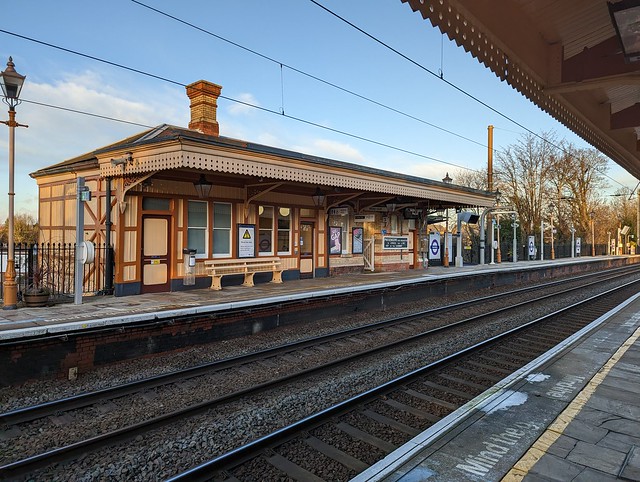

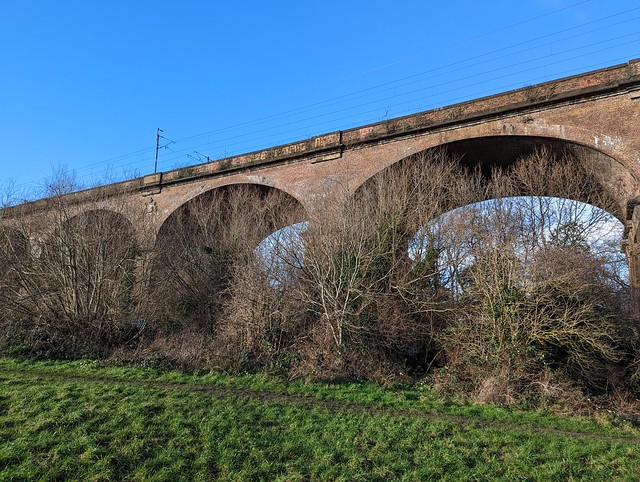
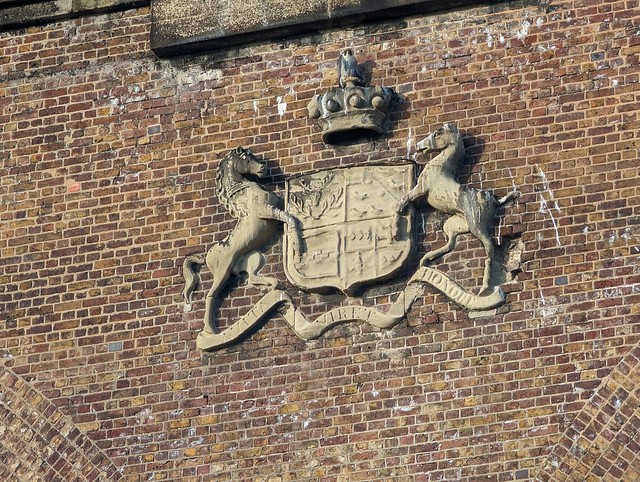
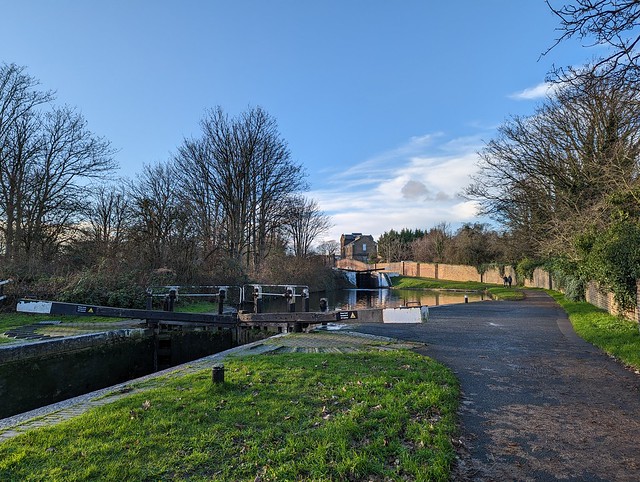

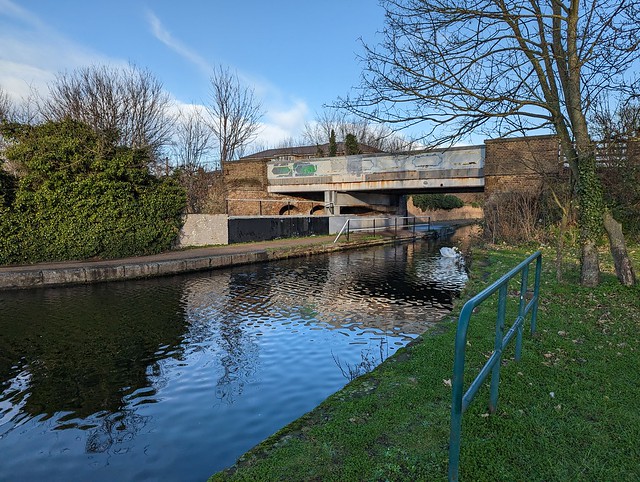


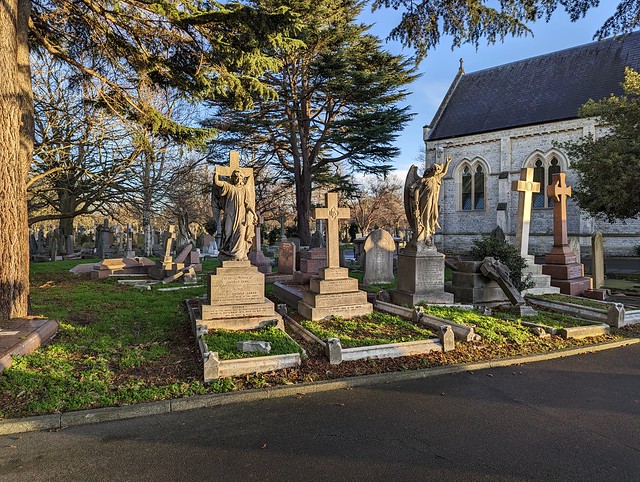
No comments:
Post a Comment